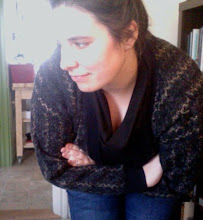Gallows Hill, Salem, MA
On July 12, William Stoughton signed a death warrant for the five women convicted by the court at its second session. Exactly a week later, on Tuesday the 19th, they were all hanged on Salem's Gallows Hill.
from Mary Beth Norton's In the Devil's Snare: The Salem Witchcraft Crisis of 1692
I've been weaning myself off nighttime TV watching and internet meandering, which has left me with some free time before bed. So, I've been reading before bed, just like I used to during those pre-1998 glory days before AOL brought Instant Messaging into my life. And since most of the books beside my bed are of the dissertation-research variety, I've been delving into some much needed diss. work.
I've nearly finished Mary Beth Norton's book, and oh, it's gripping. It's difficult not to view those Massachusetts Puritans as foolish and dangerously naive, believing as they did that a covenant with the Devil had allowed their neighbors to afflict their livestock, their children, and themselves. It's impossible for a modern reader like myself to reconstruct perfectly the ideology by which these people interpreted the events in their lives. I can try -- and heaven knows other have -- but the truth remains that we will never know exactly what it was like to live at that time. The past feels foreign and strange; it is always already elusive.
Yet I can't help myself. Despite the dangers inherent in speculating about the past, I try to piece together the emotional story threaded through the larger narrative of the trials. I want to reclaim some of the agency that is stripped away from a person when she is subjected to a trial in which spectral evidence is considered sufficient to convict her and sentence her to death. I look beyond the trials, too, to see what was lost and what remained. How did families put themselves back together, financially and emotionally? How did this community rebound from a crisis that pitted neighbor against neighbor? Suddenly, the past seems all too familiar.
Yet I can't help myself. Despite the dangers inherent in speculating about the past, I try to piece together the emotional story threaded through the larger narrative of the trials. I want to reclaim some of the agency that is stripped away from a person when she is subjected to a trial in which spectral evidence is considered sufficient to convict her and sentence her to death. I look beyond the trials, too, to see what was lost and what remained. How did families put themselves back together, financially and emotionally? How did this community rebound from a crisis that pitted neighbor against neighbor? Suddenly, the past seems all too familiar.
And so today, as I read that five women -- Rebecca Nurse, Sarah Good, Susannah Martin, Elizabeth Howe, and Sarah Wildes -- were hanged on July 19th, I pause. Three-hundred eighteen years to the day have passed, and my eyes are wet nonetheless. I feel pity and anger and disbelief that a community would allow such a thing to come to pass. I write about these events and I analyze them with the tools of analysis that I've been taught. But what I really want to write about is the heart of the matter, the humanity of these seemingly two-dimensional figures who emerge from the archives. I want to write about how I felt when I saw Gallows Hill with my own eyes, how I wasn't at all surprised to find it bleak and dreary and quiet, how I couldn't shake the chill in my bones for hours after we'd left.
When the minister offered Sarah Good a final chance to confess, she said to him: "I am no more a Witch than you are a Wizard, and if you take away my Life, God will give you Blood to drink." Her words seethe through the page, cutting through three-hundred eighteen years like that.



I'd love to discuss Gallows Hill with you. Great post!
ReplyDeleteYour readers are so lucky. The fact that you are willing to do the extra work, examining the stories not just for facts and figures but also for emotions, for faces and their families, that is a wonderful, rare thing in the world of the dissertation. Go get 'em, Fancy.
ReplyDelete